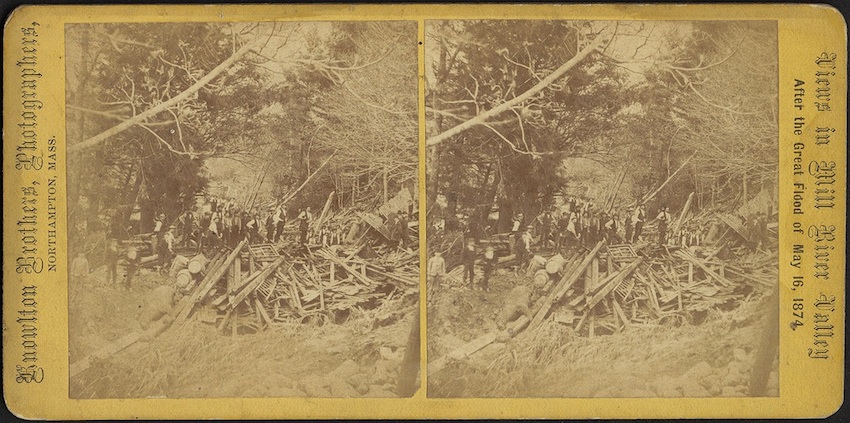Throwback Thursday: The Dam that Destroyed Four Villages

“Group of men standing by a pile of timber and debris left by the Mill River Valley flood” by Boston Public Library on Flickr
One-hundred-forty years ago this week, on May 16, 1874, residents of the Mill River Valley in Western Massachusetts heard an enormous boom. The dam that held back a then-full reservoir and powered the industry along the river had suddenly given way and released a fast-moving torrent of water that would quickly destroy everything in its path.
Hours later, valley residents took stock. They searched “… amid wreckage so dense and snarled that mattresses and quilts were knotted with belting and machinery, and hanks of raw silk were lodged with toys and potatoes,” writes historian Elizabeth Sharpe in her 2007 book on the disaster, In the Shadow of the Dam. In a matter of hours, the water had claimed 139 lives and four villages: Williamsburg, Skinnerville, Haydenville, and Leeds.
As you might imagine, this became a huge story across the country as newspapers rushed in to recount the tragedy to readers and assign blame to the dam’s owners and constructors. The Williamsburg Reservoir Company had cut corners with the design and construction of the dam in a time when there were no laws to demand a certain level of safety. Sharpe writes that, “like many other disasters of the nineteenth century, no one was held accountable. The flood’s legacy was that it prompted Massachusetts, and nearby states, to grasp the hazards of unregulated reservoirs and to pass landmark dam safety laws.”
The dam disaster, among other 19th century tragedies, fueled a larger discontent among Americans with the unregulated excesses of the industrialization. These days, we take for granted that the state will protect us from the carelessness of a company building a shoddy dam that sits in our backyard. But it was only after Massachusetts learned the hard way that we came around once and for all.


